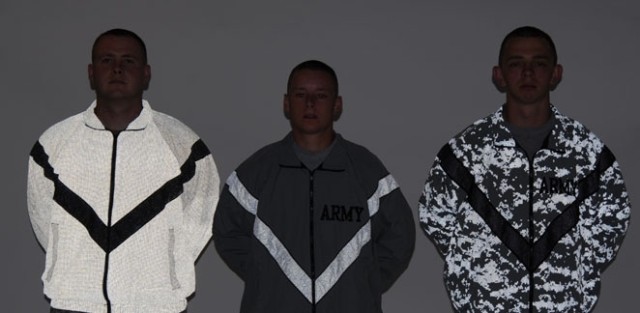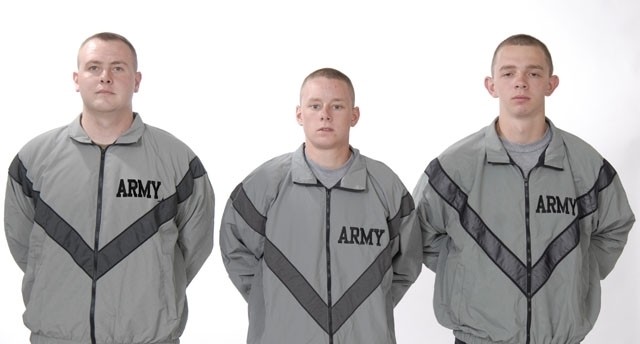NATICK, Mass. - Often when you hear about Soldiers and visibility, the stories are about trying to camouflage them in the field. However, when it comes to conducting their physical training, our service members need to be seen. Soldiers often perform PT in the early morning or early evening hours when it is dusk or dark.
"The more visible the Soldiers are when doing PT in low light conditions, the safer they will be," said Beverly Kimball, product engineer.
This is where the U.S. Army Product Manager Clothing and Individual Equipment comes in. PM-CIE is working with the U.S. Army Natick Soldier Research, Development and Engineering Center's Operational Forces Interface Group to conduct a user evaluation of new reflective technologies which enhance the current Improved Physical Fitness Uniform jacket. Two prototype fabrics have been developed with the new technology and sample jackets have been fabricated.
OFIG located and coordinated with 600 participants at Fort Hood and Fort Bliss, Texas, and Fort Lewis, Wash., to conduct the user evaluations, beginning in November. The Soldiers participating will be surveyed on their acceptance of the sample jackets.
"The prototype jackets are very similar in appearance to the current jacket during daylight," said Dave Geringer, assistant product manager, PM- CIE, Fort Belvoir, Va. "However, despite their subtle daylight appearance, both patterns are highly reflective and provide a significant improvement in visibility."
One of the jackets has a subtle digital reflective pattern, while the other has a slight texturized reflective pattern.
"All participants will have an opportunity to wear all the test items. But we want to ensure that all the jackets are tested in the same climate and conditions, so we will be conducting a 'within groups' type evaluation so styles are worn simultaneously," said Kimball.
The jackets will be evaluated for comfort, durability, launderability, wind resistance, water resistance, warmth, and reflective capabilities.
The evaluations are expected to continue through March 2008, and once complete, the data will be compiled into a final report.
"If the candidates perform well, they will be presented to the Army Uniform Board for approval to replace the current IPFU jacket," Geringer said.




Social Sharing